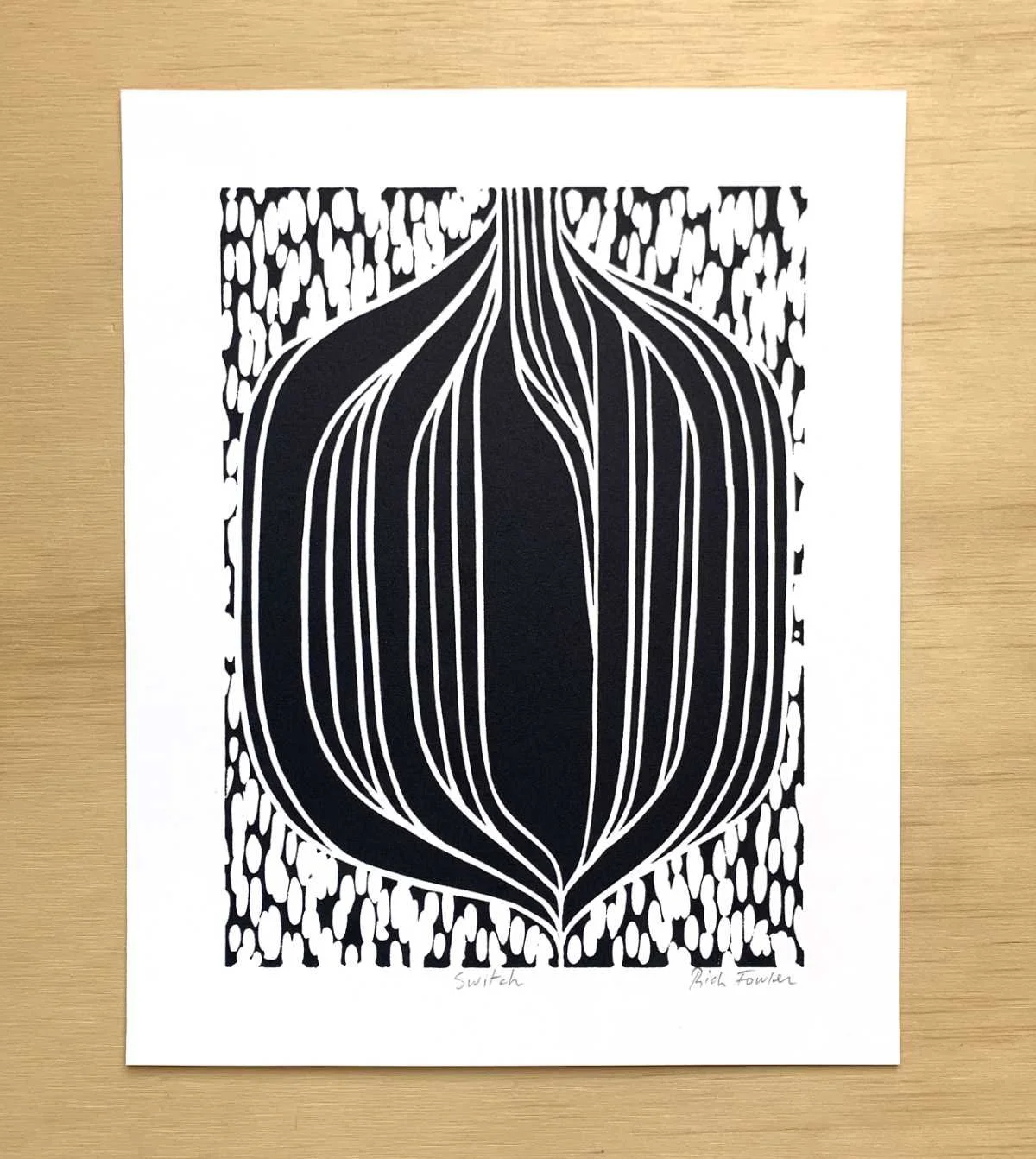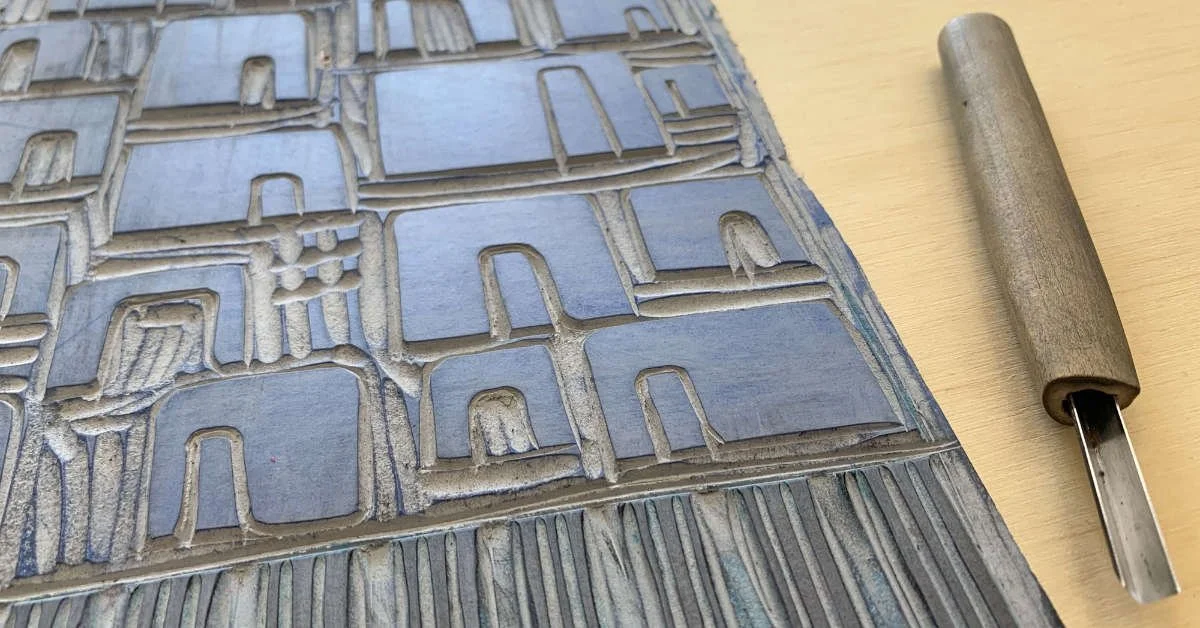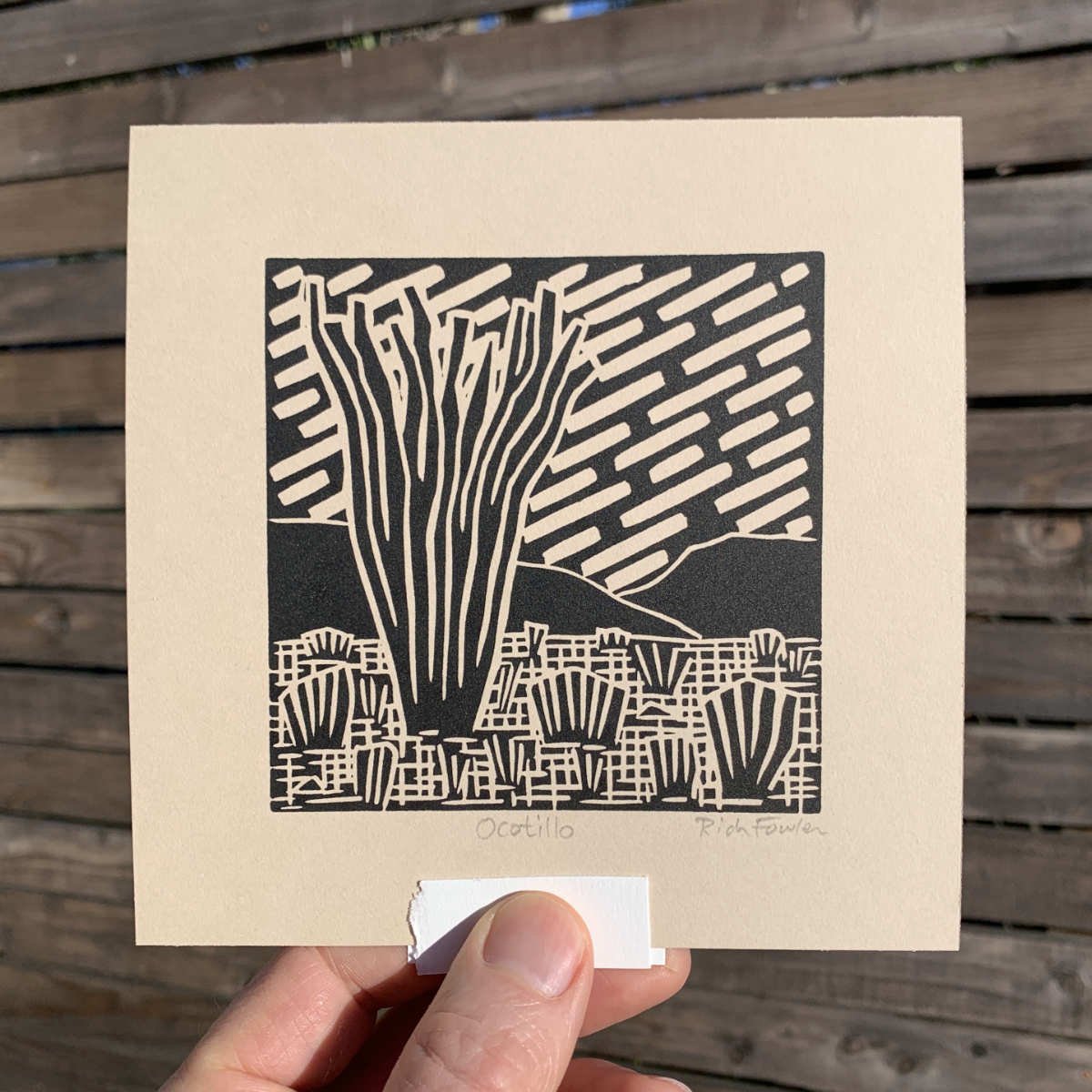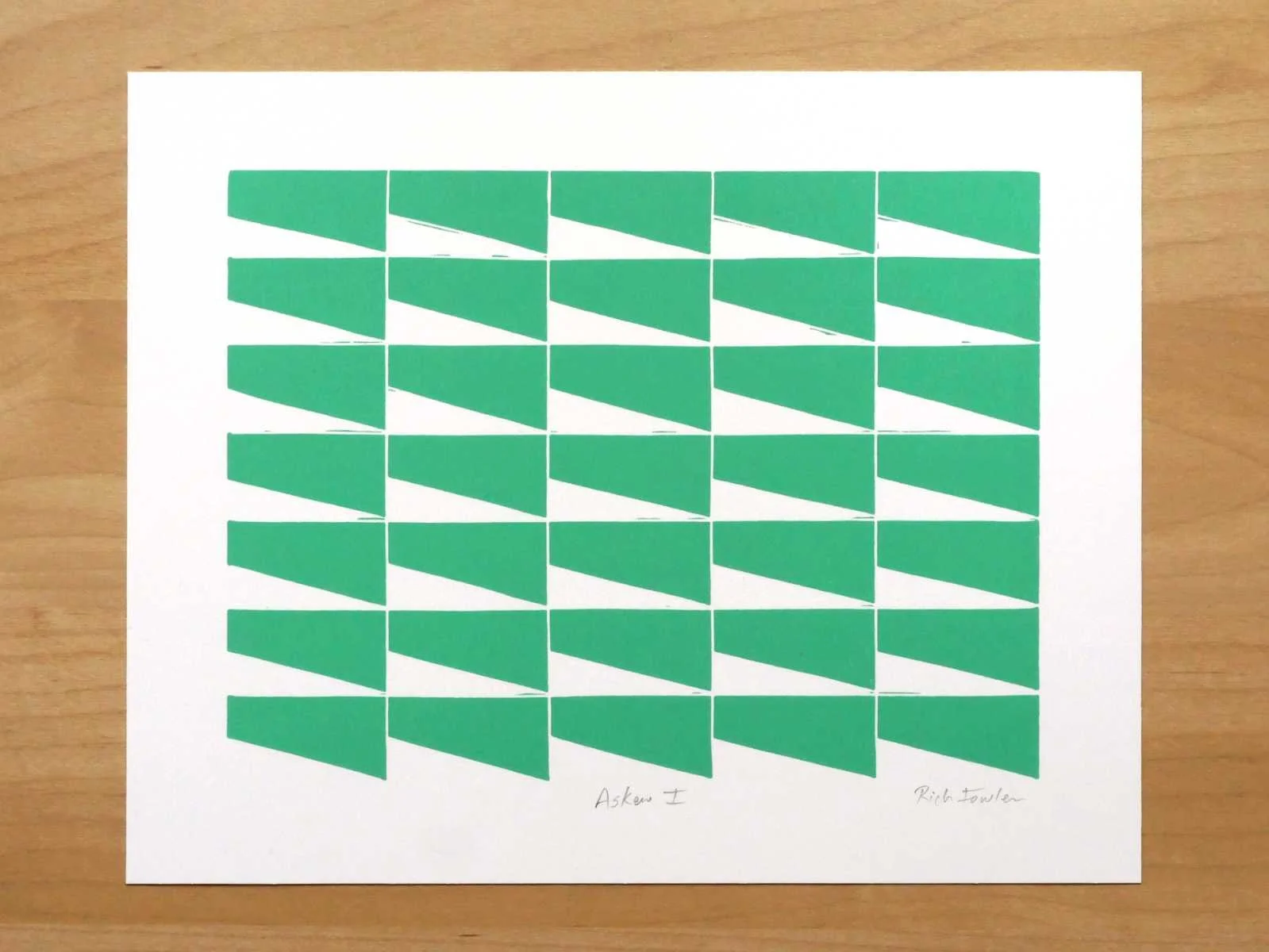How to Lino Print for Beginners
This page is for everyone who is just starting out with linocut, maybe you’re just lino print curious. I’ve been writing about the process of making linocuts for over a decade and I’m going to try to point you in the right direction if you’re a beginner to lino printing.
What is Linocut?
First, let’s make sure we’re talking about the same thing. A linocut, or lino print, is a type of block printing. At its most basic, you carve a design into a linoleum block, roll block printing ink on it and print it on paper.
Switch - Linocut Print
Lino Print Supplies You’ll Need
One of the reasons I got into linoleum block printing is that you don’t need that many supplies to get started. You really can make an easy lino print at home with a small number of materials. Some links below will take you to Blick Art Materials and Amazon, where some block printing supplies are sold. I participate in their affiliate programs so if you click on those links, I would get a small commission if you end up purchasing something on the sites, but please shop at your favorite shop! You can find more details about this here. McClain's Printmaking Supplies is a smaller US company that also sells relief printing materials.
If you’re trying to put together a linocut kit, here are some popular supplies.
You’re going to want:
Linoleum - I like traditional battleship gray lino. (More details about choosing and buying linoleum.)
Carving Tool(s) - I use a variety of lino tools from cheap to expensive. (A review of common relief caving tools I use.) One of my go-to types of tools are Power Grip Carving Tools.
Linoleum Block and Lino Carving Tool
Block Printing Ink - Cranfield Caligo Safe Wash Relief Ink, which is oil-based, is what I use most often when printing on paper. If you’ve never printed before, you might want a water-based ink. (A review of lots of block printing inks that I wrote.) And, if you’re printing on fabric you’ll probably one to try Speedball Fabric Block Printing Inks.
Soft Rubber Brayer / Roller - I have numerous ranging from narrow to 12 inches wide. Speedball Soft Rubber Brayers are some of the most common affordable ones.
A Big Spoon (or Baren) - though I print on a press, most beginners use the back of a spoon or a baren to print.
Paper - if you’re printing by hand instead of a press you might find this post about printmaking paper helpful.
Inking a linoleum block with a brayer.
How to Make a Linocut
The process of making a lino print includes coming up with a design, carving it in a lino block and printing it with ink (not paint) on paper. These are posts that I’ve written over the years to break down the process of making a linocut. Start with the first resource below if you want an overview of the process.
Making a Lino Print Step by Step
Start Here :) This is a detailed description of the process that I use for making a single color lino print from design all the way through printing.
Simple Linocut Patterns
A sampling of some basic black and white lino patterns.
Options for Making Color Linocut Prints
Once you’ve learned how to make a simple lino print you might be interested in making color prints. Here are some printmaking techniques you can use.
Making a Rubber Stamp
If you prefer to start off using a soft rubber block instead of traditional lino, here’s a stamp making tutorial I wrote.
Short Instagram Videos Demonstrating the Linocut Process
Examples of Single Color Linoleum Block Prints
Askew I - Linoleum Block Print
Aloft III - Linocut Print
Lino Printing Problems? Try These Tips
If you’re having printing problems here are three tips to help you get the lino print results you’re looking for.
Getting ink printed where you don’t want? Stray marks? Try this linocut troubleshooting blog post I wrote a few years ago.
Carved out something small by accident? Try fixing the mistake with super glue like I outline on this page (scroll to the bottom of the page).
If You Want More Linocut Help
Feel free to contact me with a question!
Enroll in my online lino print course.
Have fun linocutting, Rich
Last updated: October 1, 2025





